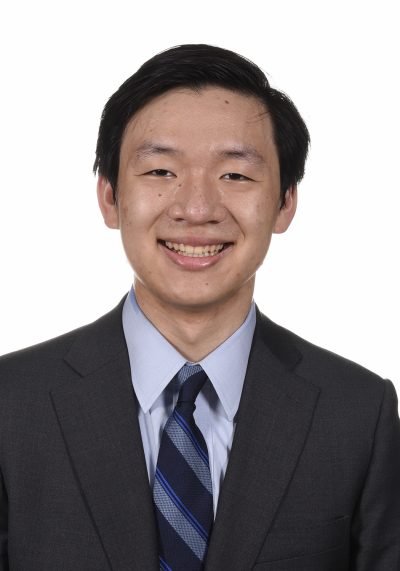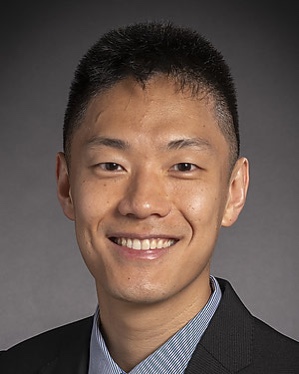By Michael Xie and Risheng Xu
Working at the Johns Hopkins Cerebrovascular Center, we are privileged to participate in the treatment of patients with moyamoya arteriopathy. In caring for these patients, we see the devastating effect the disease can have on quality of life. In pediatric populations, moyamoya can cause strokes within the first decade of life. For patients who experience strokes, surgical treatment to revascularize the brain is possible. This is typically achieved via a direct bypass procedure to connect the superficial temporal artery (STA) to the middle cerebral artery (MCA), or an indirect bypass procedure where highly vascularized structures are placed in direct contact with the cerebral cortex to promote new vessel ingrowth (angiogenesis) into the brain.
The operations for revascularizing the brain are uniquely challenging in pediatric patients with bilateral moyamoya (both sides of the brain involved). Neurosurgeons are faced with the decision of whether to perform bilateral revascularizations at one time, or to operate on one side, allow recovery, then operate on the other side. By performing the procedures in a single operation, patients do not need to undergo multiple rounds of fasting, hospital admissions, and anesthesia induction, but the duration of surgery and physiologic stress on the body may be higher. On the other hand, by staging the surgeries, the window of time between the first and second operations may allow for an increased chance of stroke in the untreated hemisphere.
We reviewed the medical records for 38 children who underwent surgical treatment for bilateral moyamoya. We found that the rate of postoperative stroke was higher and a recurrent stroke was more likely to happen sooner in patients undergoing bypass in both hemispheres on the same day compared to patients undergoing a staged procedure. Though more investigation is required, our findings suggest that staging moyamoya revascularization operations, which currently varies by surgeon preference, may allow for improved patient outcomes.
Links to Relevant Scientific Publications:
- Original paper coining the term “Moyamoya disease” Suzuki J, Takaku A. Cerebrovascular “moyamoya” disease. Disease showing abnormal net-like vessels in base of brain. Arch Neurol. 1969 Mar;20(3):288-99. doi: 10.1001/archneur.1969.00480090076012. PMID: 5775283.
- Review on pediatric Moyamoya disease. Ibrahimi DM, Tamargo RJ, Ahn ES. Moyamoya disease in children. Childs Nerv Syst. 2010 Oct;26(10):1297-308. doi: 10.1007/s00381-010-1209-8. Epub 2010 Jul 4. PMID: 20607248.
- Our study of surgical timing for children with bilateral Moyamoya arteriopathy. Xu R, Xie ME, Kim J, Kothari R, Sun LR, Jackson EM, Tamargo RJ, Huang J, Ahn ES, Cohen AR. Same-day versus staged revascularization of bilateral moyamoya arteriopathy in pediatric patients. Childs Nerv Syst. 2023 May;39(5):1207-1213. doi: 10.1007/s00381-023-05916-1. Epub 2023 Mar 17. PMID: 36930272.

Michael E. Xie
Johns Hopkins University School of Medicine
Michael E. Xie, AM is an MD/PhD student at the Johns Hopkins University School of Medicine. He has been conducting research in the Department of Neurosurgery with Dr. Risheng Xu and has a particular interest in cerebrovascular and functional neurosurgery.

Risheng Xu
Johns Hopkins University School of Medicine
Risheng Xu, MD, PhD is an Assistant Professor of Neurosurgery at the Johns Hopkins University School of Medicine. He is dual-trained in open cerebrovascular/skull-base, as well as endovascular techniques, and specializes in the treatment of patients with complex cerebrovascular disorders, including those with Moyamoya disease.
